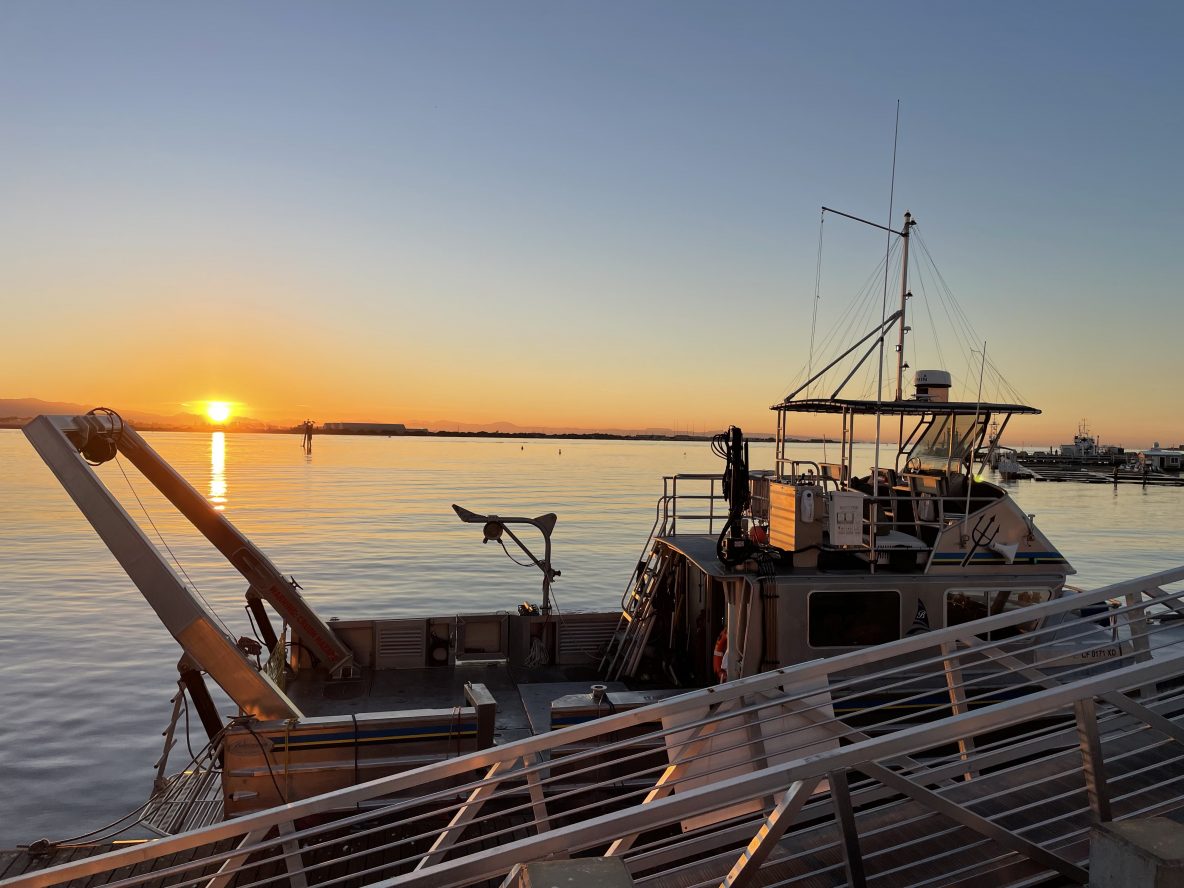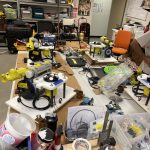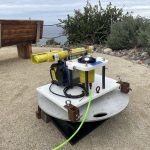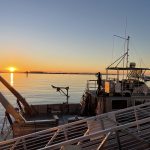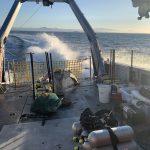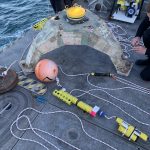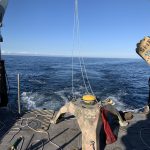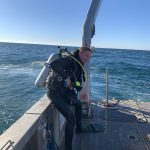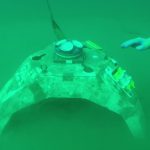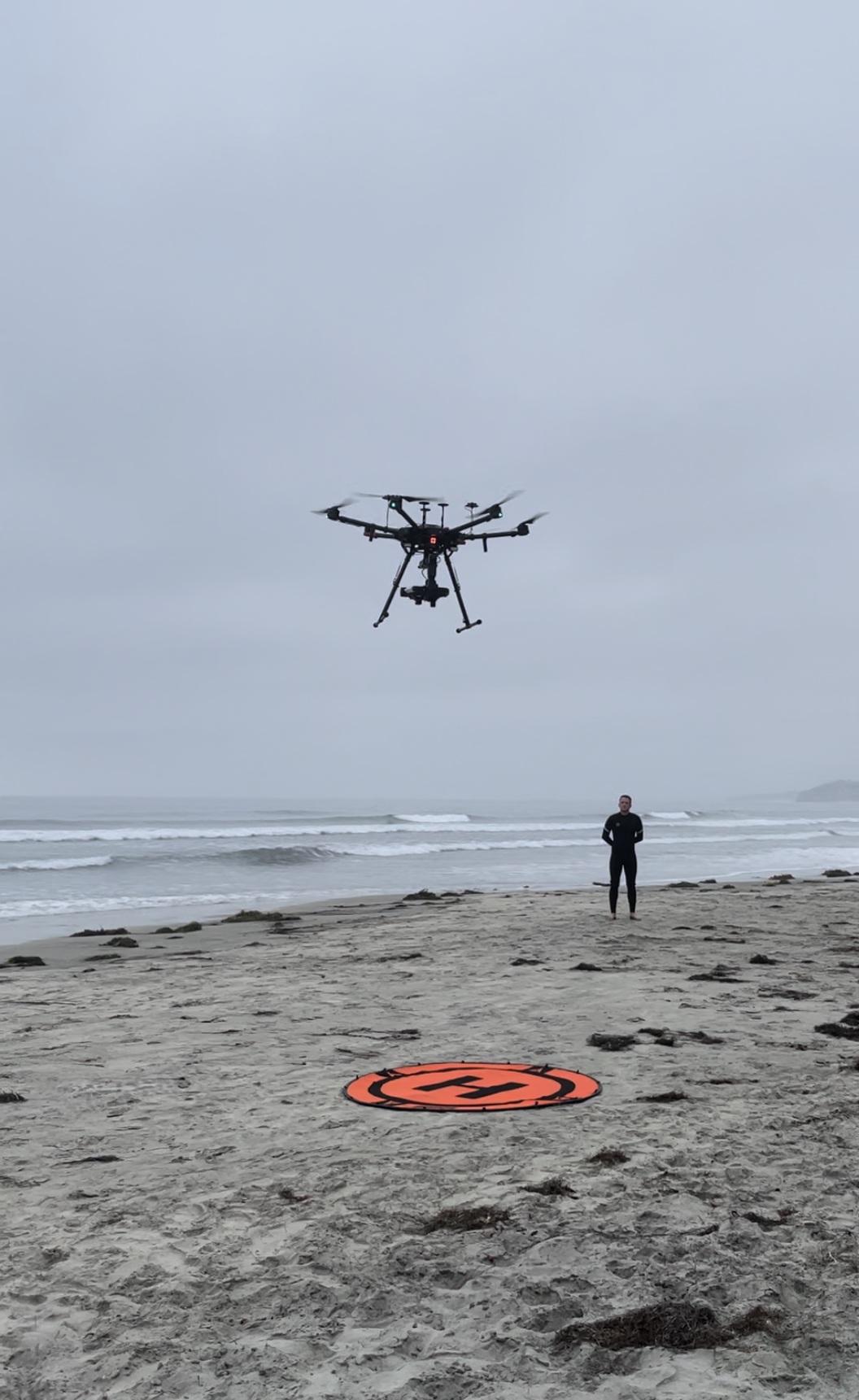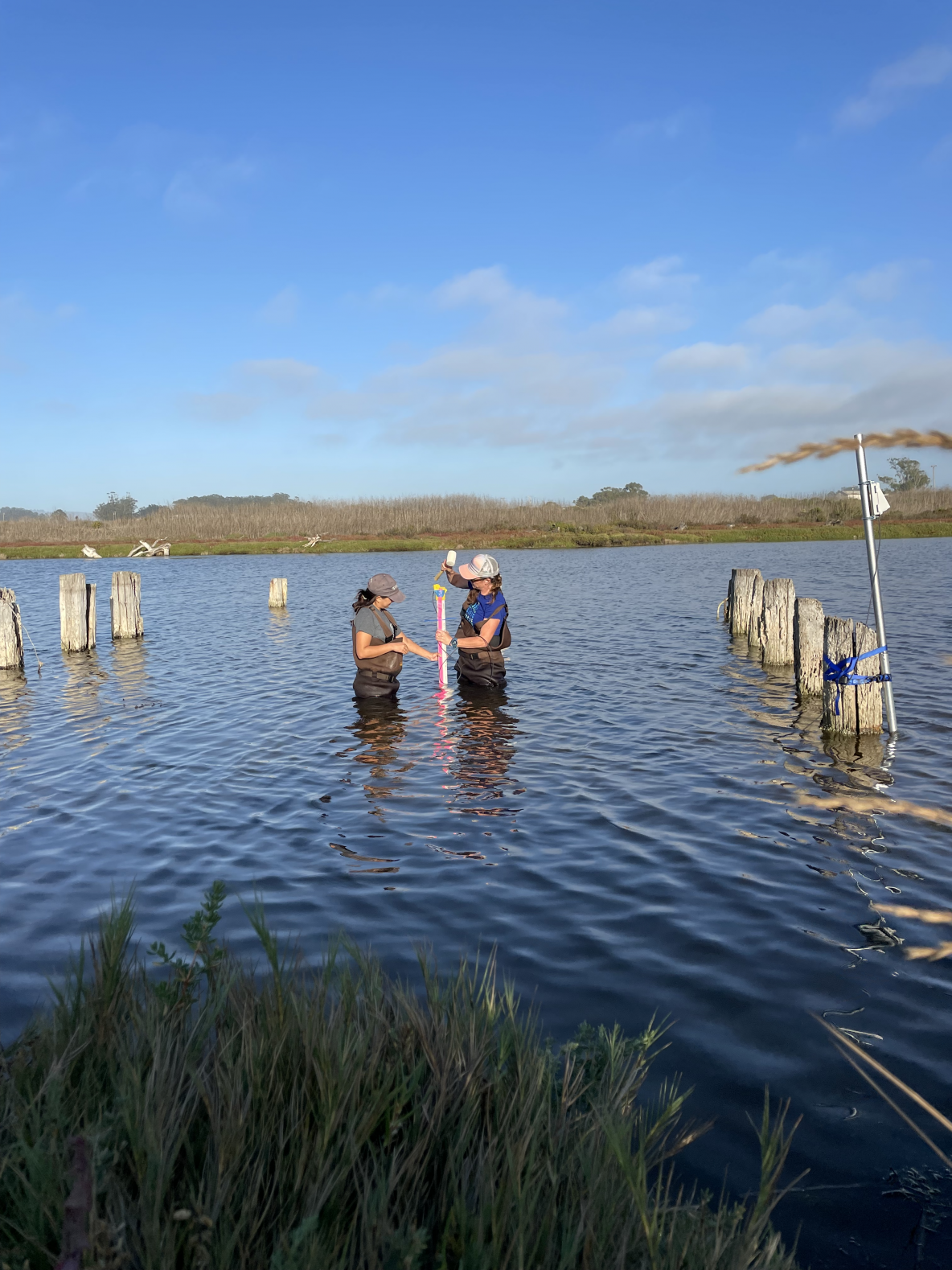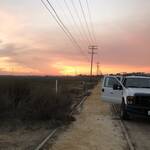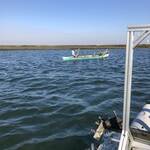The Scripps Institution of Oceanography (SIO), UCSD, is looking for a postdoctoral scholar to work on a project aiming to improve our understanding and develop predictions of coastal water quality. The postdoctoral scholar will be responsible for building upon an existing realistic regional numerical model to help transition the model into a predictive tool. A strong background in oceanography is required and preference will be given to those with significant expertise in numerical modeling and coastal hydrodynamics. The existing regional numerical model uses the COAWST framework (ROMS + SWAN), thus experience within this framework is desirable. The position will be located at SIO working with Dr. Falk Feddersen, Dr. Sarah Giddings, Dr. Matt Spydell, Dr. Ganesh Gopalakrishanan, and Dr. Bruce Cornuelle. The postdoctoral scholar will help develop the real-time modeling capabilities (reading in real-time forcing fields, automating outputs, etc). The postdoctoral scholar will also examine model performance and potential improvements to model performance using data assimilation. The postdoctoral scholar will have the opportunity to work on scientific analyses of model output on topics ranging from applied (the modeling tool development and applications) to basic (the interaction between outflows and breaking surface gravity waves, internal tides, etc.). Moreover, there will be opportunities for interaction with scientists in other fields related to the project as well as graduate and undergraduate students working in the PI’s labs. This particular position and project is entirely focused on numerical modeling and comparisons to observations, however, there will likely be opportunities to participate in field work. Finally, if desired, the postdoctoral researcher will have the ability to participate in stakeholder engagement and outreach. Additional information about this position and how to apply can be found here. Additional information about postdoctoral positions at UCSD, professional development and career training opportunities, and benefits can be found on the UCSD Office of Postdoctoral Scholar Affairs website.
undergraduate research opportunity in oceanographic particle tracking visualization tool development!!
As part of an NSF CAREER award, the Giddings lab is looking for a few undergraduate researchers to help further develop an existing oceanographic particle tracking visualization tool. Strong coding experience is necessary, particularly with Java as that is the current language for the tool. Much more information about the project goals and opportunity are here. For those interested in applying, please email Dr. Sarah Giddings, and send a brief cover letter, a copy of your CV, and transcript (all in a single pdf), and available times to meet.
PiNC Project Update: First Splash
The Plumes in Nearshore Conditions (PiNC) project is underway with our first field deployment. On Thursday and Friday (Dec 8-9, 2022) the field crew at SIO placed five outer-surfzone stations at 8m water depth, and one deeper 30m station offshore of Los Peñasquitos Lagoon. Both the R/V Sally Ann and R/V Bob and Betty Beyster were used – a two ship endeavor! The outer 8m stations stretch 1km of coastline centered at LPL with the anticipation of observing escaped river plumes, with two additional stations spanning 7km southward, which connect LPL to the SIO pier for a larger alongshore study led by SIO PhD student Sierra Byrne. The 8m stations have bottom-mounted frames, largely designed by field crew member Shane Finnerty, that include a combination of ADCPs, CTDs, fluorometers, and miniDOTs for measuring currents, temp/salinity, dye concentration, and oxygen, respectively. These were placed on the seafloor and jetted into place by the field crew divers. The 30m station used a special bottom frame called a Sea Spider; included GoPro photo was taken by field crew member/diver Rob Grenzeback at 30m depth during its deployment. The surface floats of each station additionally have CTDs and fluorometers for observing the buoyant (and during our intensive ops, dye-filled) plume. Several stations additionally have surface miniDOTs, and thermistor chains throughout the water column. The crew reports that it was a great day on the water, with up to 50ft visibility while diving. These stations will be out for 2 months, and additional stations in the surfzone will be added in the coming weeks. To be continued…
- Lab in full prep mode
- Calibrating the ADCP compasses on the cliffs at SIO.
- Early morning loading the Beyster before deployment.
- Beyster underway (pc Sierra Byrne)
- 30m mooring ready to deploy (pc Sierra Byrne)
- Sea Spider on the Beyster’s stern (pc Sierra Byrne)
- Diver Shane Finnerty (pc Sierra Byrne)
- The crew deploying a bottom frame off the Beyster with the Sally Ann in background (pc Sierra Byrne)
- GoPro snap of Sea Spider during deployment (pc Rob Grenzeback)
Workshop with Headwall Photonics
In early October, lab member Alex Simpson and field crew member Rob Grenzeback hosted a meeting and workshop centered around hyperspectral cameras mounted on drones. Headwall Photonics, the company that produces the camera we are using for upcoming field work, sent several technicians to train us in the usage of their equipment. A hyperspectral camera is different than your average camera (which parses light into 3 spectral wavelengths: Red, Green, and Blue) because is able to parse reflected light from objects into many, many wavelengths (270 to be exact!) which gives ~100x more information about what is being imaged. Our application for this technology is to collect imagery of Rhodamine dye releases at the mouth of Los Peñasquitos Lagoon to track river plume behavior in the surf zone (similar to past study CSIDE). By using the hyperspectral camera, we aim to determine the concentration of dye, and by proxy the concentration of fresh water, using spectral properties of the dye in the imagery. During the workshop, we released a small amount of dye into the ocean near the SIO pier, and had success in flying the drone, collecting imagery of the dye, and some initial post processing of the data! The pictures below show field crew member Shane Finnerty preparing the Rhodamine dye, which is hot pink in color, and the crew gathered on the beach before our drone flights. A sample image of the dye is included, where you can see the hot pink dye at the surface and seaweed underwater, surrounded by the sandy ocean bottom.
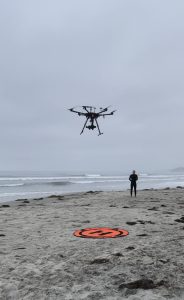
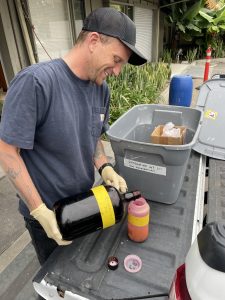
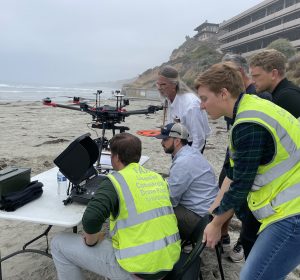

Fieldwork in the Pajaro Lagoon, Monterey, CA
At the end of September, lab members Lauren Kim and Alex Simpson assisted in some instrument deployment and data collection at the Pajaro Lagoon in Monterey, CA, with Naval Postgraduate School (NPS) collaborators, Dr. Mara Orescanin and her students, Kierstin Pastrana and John Plant. The team installed a water logger with real-time monitoring in the nearby slough system, and CTD casts and bathymetry surveys were conducted via kayak. To collect the bathymetry, an ADCP was towed behind the kayak and the paddler zig-zagged across the estuary. The CTD casts were collected using a hand-deployed Castaway. During the second day of fieldwork, the team collected drone imagery to observe wave runup at the lagoon mouth and intended to test a LiDAR drone. However, a thick marine layer rolled through the testing site and the LiDAR drone had to remain grounded. Overall the trip was a success, and the data collected will bolster Lauren Kim’s thesis work and provide preliminary data for Dr. Orescanin’s students at NPS.
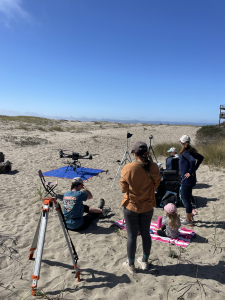
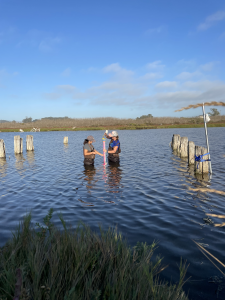

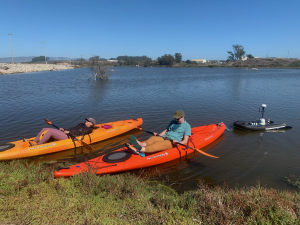
New postdoc position in ocean forcing of estuarine exchange!
Postdoc in oceanic forcing of estuarine exchange at Scripps Institution of Oceanography, UCSD
The Scripps Institution of Oceanography (SIO) Center for Coastal Studies, UCSD, is looking for a postdoctoral scholar to work on an NSF-funded project aiming to improve our understanding of the importance of remote oceanic forcing on estuarine exchange flow across estuarine parameter space. The postdoctoral scholar will be responsible for building upon a series of existing realistic regional numerical models over multiple hindcast years, conducting some semi-idealized simulations, and analyzing estuarine exchange flow across estuarine parameter space. A strong background in oceanography is required and preference will be given to those with significant expertise in numerical modeling. Most of the existing available regional numerical models use the ROMS framework, however, several are spread across different regional hydrodynamic codes (including SCHISM, GETM, SUNTANS, and FVCOM), thus significant experience across different coding languages is desirable. The position will be located at SIO working with Dr. Sarah Giddings, with opportunities to mentor graduate and undergraduate students. Moreover, there will be opportunities for interaction with scientists worldwide who are contributing model output. This particular position and project is entirely focused on numerical modeling, however, there will likely be opportunities to participate in field work within the Giddings laboratory and potentially other groups at SIO. Finally, if desired, the postdoctoral researcher will have the ability to participate in the project’s significant outreach component, including helping to implement and design an interactive visualization tool for numerical simulations. Additional information and application instructions for this postdoctoral position can be found here.
postdoc position open!
The Scripps Institution of Oceanography (SIO) Center for Coastal Studies, UCSD, is looking for a postdoctoral scholar to work on an NSF-funded project aiming to improve our understanding of the fate of small river plumes in the surfzone. This work is motivated by the need to improve our understanding of transport of environmental constituents ranging from larvae to pollution in coastal waters. The postdoctoral scholar will be responsible for collecting and analyzing field observations, and helping to run/analyze realistic coupled numerical simulations of small buoyant plumes in the surfzone. A strong background in physical oceanography is required and preference will be given to those with expertise in coastal dynamics with both observational and modeling experience. The position will be located at SIO working with Dr. Sarah Giddings, with opportunities to mentor graduate and undergraduate students and work with co-PIs and colleagues at the University of Washington (UW), SIO, and Universidad Técnica Federico Santa María, Chile. Click here for additional information about this postdoctoral position.
new postdoctoral scholar, Dr. Lemagie!
Dr. Emily Lemagie started with the lab in December 2020. She will be working on an NSF CAREER award investigating the relative role of oceanic forcing on estuarine exchange flow. Her background and expertise in estuarine science, river plume dynamics, inner-shelf dynamics, and science communication is an excellent fit for this project. She completed her PhD in Physical Oceanography at Oregon State University in 2018 working with Dr. Jim Lerczak and worked as a postdoctoral scholar at the Woods Hole Oceanographic Institution with Dr. Anthony Kirincich and Dr. Steve Lentz before joining our group in December 2020.
most Seal Beach instrumentation recovered!
Most of our instruments in the Seal Beach National Wildlife Refuge and Huntington Harbor were successfully recovered! A few instruments remain to continue our study to assess marsh response to human alterations. This project is in collaboration with the Seal Beach National Wildlife Refuge, Naval Weapons Station Seal Beach, and Naval Facilities Engineering Command Southwest.
- finishing up at sunset due to the late low tides!

